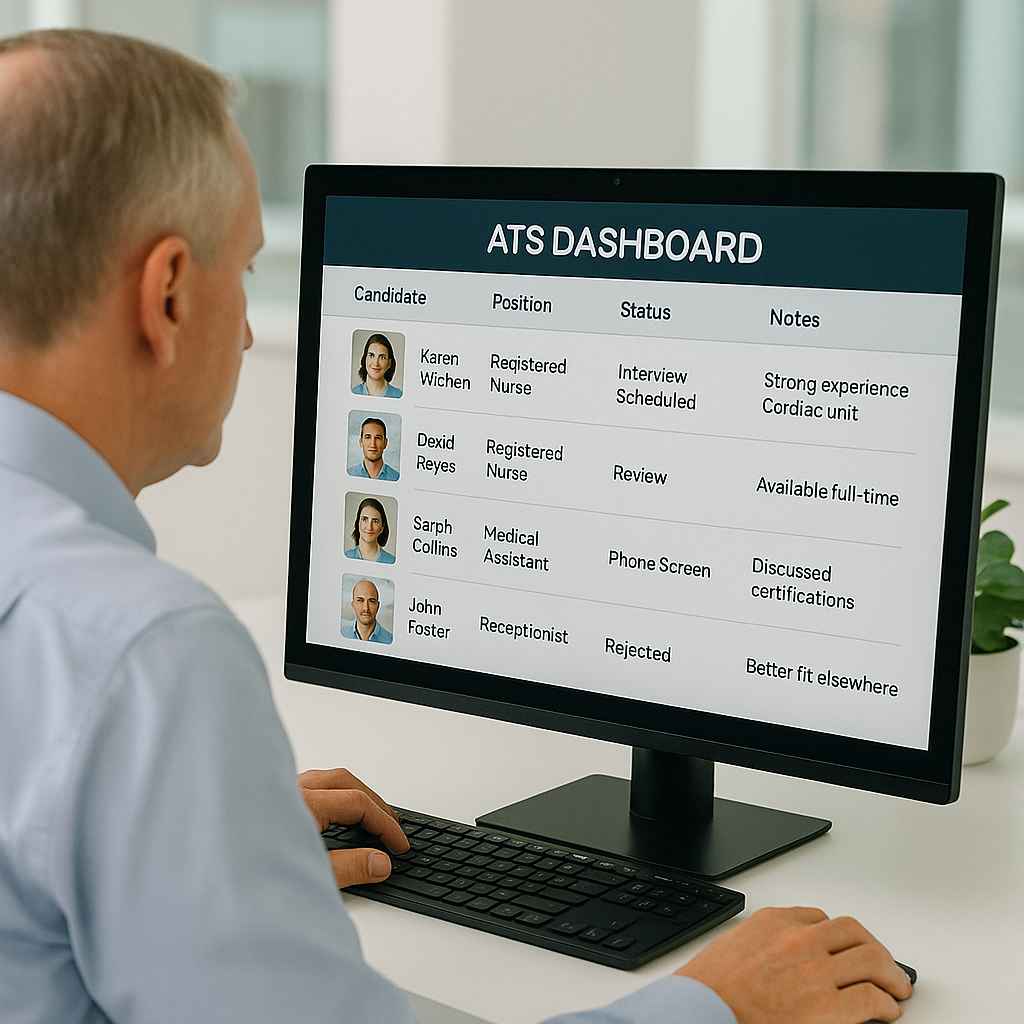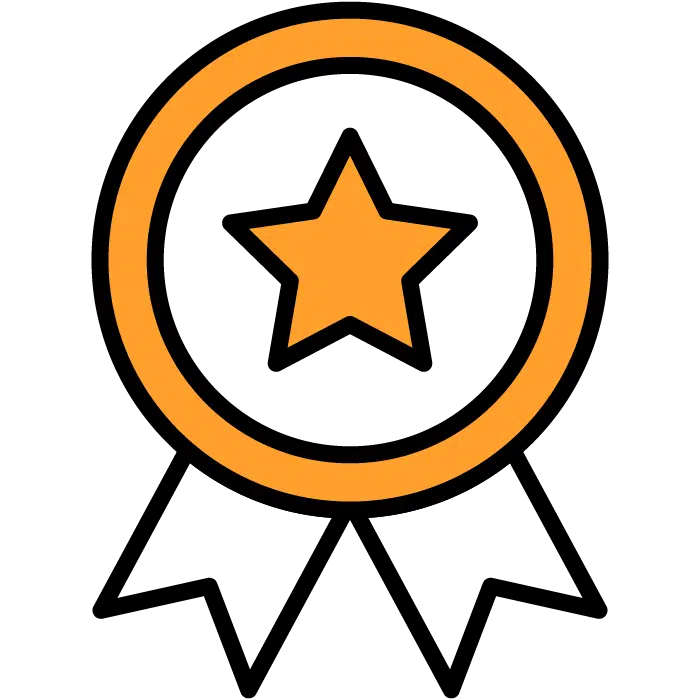Hiring in healthcare isn’t just fast-paced—it’s high-stakes. Whether you’re recruiting nurses, lab techs, or hospital administrators, every position impacts patient care, safety, and team performance. That’s why relying on outdated, manual hiring processes can be risky—and even costly.
Enter the Applicant Tracking System (ATS): a digital tool that modern healthcare teams now depend on to hire efficiently, stay compliant, and find better-fit candidates—fast.
Let’s dive into how the right ATS transforms healthcare hiring from chaotic to coordinated, and why it’s becoming essential in today’s medical landscape.
Why Healthcare Needs a Specialized ATS
Healthcare is a different beast when it comes to hiring. Here’s why:
| Challenge | What It Means in Healthcare |
| Urgency | Staffing gaps delay care and increase risk |
| Compliance | Requires credential checks, license tracking, and data protection |
| High turnover | Nurses, aides, and support roles often have high attrition rates |
| 24/7 operations | Hiring across shifts, weekends, and locations adds complexity |
And that’s not even touching on seasonal spikes, pandemics, or local staff shortages. A generic hiring tool just doesn’t cut it. You need a system that understands healthcare.
Key Benefits of Using an ATS in Healthcare

Here’s what a modern ATS can bring to the table for hospitals, clinics, and care providers:
1. Faster, Smarter Hiring
With AI screening, resume parsing, and automated workflows, you can reduce your time-to-hire—even when you need to staff multiple roles quickly.
2. Credential and License Tracking
Automatically verify professional licenses, CPR certifications, and medical credentials. Built-in alerts notify you before expirations.
3. Interview Coordination for Multi-Shift Teams
An ATS lets you schedule interviews based on availability across day, night, and weekend shifts—ideal for 24/7 care facilities and even NHS environments.
4. Centralized Candidate Management
No more lost CVs or scattered notes. Everything lives in one secure platform, so HR, department heads, and hiring managers stay in sync.
5. Audit-Ready Compliance
Whether you’re subject to HIPAA, NHS, or local labor laws, your ATS helps maintain digital trails and protects sensitive candidate data.
For a deeper understanding of how applicant tracking systems intersect with broader healthcare responsibilities, see this study on the role ATS tools play in healthcare provider settings.
It highlights how ATS platforms are becoming pivotal not just for hiring, but for ensuring operational efficiency and quality care delivery.
Why Discovered’s ATS Is Ideal for Healthcare

Our AI-powered system is designed to handle the unique pressures of healthcare hiring. Whether you’re in a clinic, hospital, or private practice, Discovered’s ATS brings clarity and control to the hiring process.
Here’s how:
| Feature | Why It Matters for Healthcare |
| Multi-role workflows | Differentiate hiring for nurses vs. admin vs. lab staff |
| AI ranking and filters | Identify the right qualifications instantly |
| Role-based dashboards | HR, clinical supervisors, and execs each see what they need |
| Automated follow-ups | Keep candidates warm and engaged in long pipelines |
| License check integrations | Ensure compliance without added admin time |
It’s no surprise this same logic applies to similar complex environments like facilities management and logistics—where time, compliance, and coordination are critical.
Ideal Roles You Can Hire with an ATS

| Role | ATS Advantage |
| Registered Nurses | Track licensure and qualifications automatically |
| Medical Assistants | Auto-screen for certification and shift preferences |
| Administrative Staff | Automate communication and form collection |
| Physicians & Specialists | Structured workflows for senior hiring |
| Support Staff | Bulk-hire and onboard quickly |
And if you’re operating in mixed environments (like health and social care or hospitality-adjacent care centers), Discovered’s ATS adapts across departments.
Compared to Manual Hiring Methods
Here’s a quick snapshot of how an ATS stacks up against traditional healthcare hiring:
| Task | Manual | ATS |
| Resume Sorting | Hours per role | Seconds with AI |
| Interview Scheduling | Manual coordination | Automated across shifts |
| Compliance Tracking | Paper files or spreadsheets | Real-time alerts & logs |
| Communication | Email chains | Centralized, templated |
| Candidate Experience | Inconsistent | Professional and streamlined |
This is especially important in competitive markets where recruiting agencies and staffing firms are also sourcing the same talent.
Related Resources
Explore how other industries use ATS tools to improve hiring workflows:
- Applicant Tracking System for Social Care
- Applicant Tracking System for Financial Services
- Applicant Tracking System for Technology
- Applicant Tracking System for Small Business
- Pillar: Applicant Tracking System for Different Industries
FAQs: Applicant Tracking System for Healthcare
Can this ATS track medical certifications and licenses?
Yes. It automates license verification, sets expiry alerts, and stores digital credentials securely.
How does it help with shift-based hiring?
Interview scheduling and role tagging allow hiring managers to assign candidates based on shift needs and availability.
Can it reduce our time-to-hire?
Absolutely. Most users report cutting hiring time by 40–60% with our AI-powered features.
Is it secure enough for patient-facing organizations?
Yes. Our platform is built with healthcare-grade data security and compliance in mind.
Will it support remote interviews and onboarding?
It integrates with video tools and e-signature platforms for seamless remote workflows.
Final Thoughts
Healthcare hiring demands speed, precision, and accountability. Every hire impacts your patients, your team, and your reputation. A well-designed ATS—like the one we’ve built at Discovered—does more than simplify admin. It gives your team the power to hire faster, stay compliant, and find talent that truly fits.
Schedule a free demo with our ATS experts to dive into how our AI-powered solution can enhance your hiring strategy.




